
Filter News
Area of Research
- (-) National Security (16)
- (-) Neutron Science (13)
- Advanced Manufacturing (1)
- Biological Systems (1)
- Biology and Environment (36)
- Computational Biology (1)
- Computer Science (1)
- Electricity and Smart Grid (2)
- Energy Science (39)
- Functional Materials for Energy (1)
- Fusion and Fission (24)
- Fusion Energy (4)
- Isotopes (7)
- Materials (22)
- Materials for Computing (2)
- Nuclear Science and Technology (19)
- Quantum information Science (5)
- Supercomputing (33)
News Type
News Topics
- (-) Biomedical (9)
- (-) Clean Water (2)
- (-) Grid (3)
- (-) Machine Learning (11)
- (-) Nuclear Energy (5)
- (-) Quantum Science (3)
- 3-D Printing/Advanced Manufacturing (4)
- Advanced Reactors (2)
- Artificial Intelligence (10)
- Big Data (5)
- Bioenergy (6)
- Biology (8)
- Biotechnology (1)
- Buildings (1)
- Chemical Sciences (2)
- Computer Science (18)
- Coronavirus (6)
- Cybersecurity (10)
- Energy Storage (2)
- Environment (7)
- Fossil Energy (1)
- Fusion (2)
- High-Performance Computing (4)
- Hydropower (1)
- Materials (7)
- Materials Science (13)
- Mathematics (1)
- Microscopy (1)
- Nanotechnology (5)
- National Security (27)
- Neutron Science (62)
- Partnerships (2)
- Physics (3)
- Polymers (1)
- Quantum Computing (1)
- Security (7)
- Simulation (1)
- Space Exploration (2)
- Summit (2)
- Transportation (1)
Media Contacts
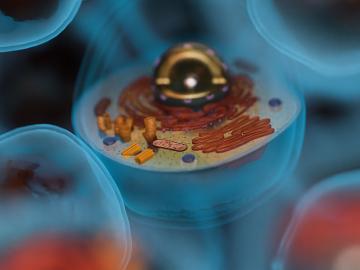
Scientists at ORNL used neutrons to end a decades-long debate about an enzyme cancer uses.

Digital twins are exactly what they sound like: virtual models of physical reality that continuously update to reflect changes in the real world.
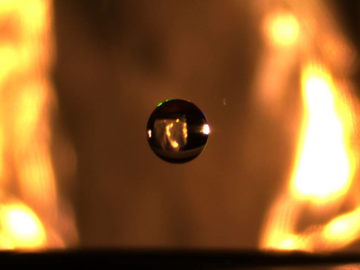
How do you get water to float in midair? With a WAND2, of course. But it’s hardly magic. In fact, it’s a scientific device used by scientists to study matter.

Neutron experiments can take days to complete, requiring researchers to work long shifts to monitor progress and make necessary adjustments. But thanks to advances in artificial intelligence and machine learning, experiments can now be done remotely and in half the time.
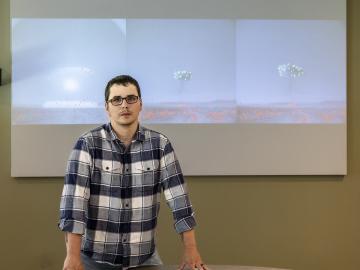
Cody Lloyd became a nuclear engineer because of his interest in the Manhattan Project, the United States’ mission to advance nuclear science to end World War II. As a research associate in nuclear forensics at ORNL, Lloyd now teaches computers to interpret data from imagery of nuclear weapons tests from the 1950s and early 1960s, bringing his childhood fascination into his career
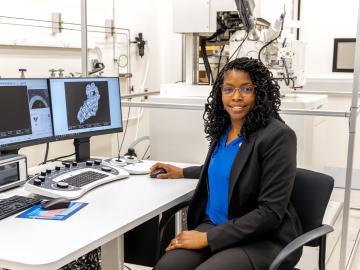
After completing a bachelor’s degree in biology, Toya Beiswenger didn’t intend to go into forensics. But almost two decades later, the nuclear security scientist at ORNL has found a way to appreciate the art of nuclear forensics.
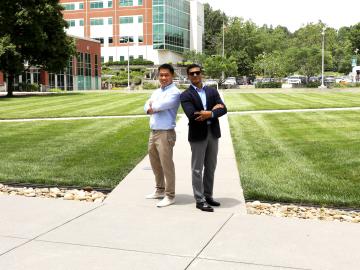
When geoinformatics engineering researchers at the Department of Energy’s Oak Ridge National Laboratory wanted to better understand changes in land areas and points of interest around the world, they turned to the locals — their data, at least.
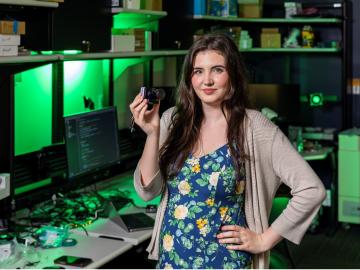
Tristen Mullins enjoys the hidden side of computers. As a signals processing engineer for ORNL, she tries to uncover information hidden in components used on the nation’s power grid — information that may be susceptible to cyberattacks.

Stephen Dahunsi’s desire to see more countries safely deploy nuclear energy is personal. Growing up in Nigeria, he routinely witnessed prolonged electricity blackouts as a result of unreliable energy supplies. It’s a problem he hopes future generations won’t have to experience.

A partnership of ORNL, the Tennessee Department of Economic and Community Development, the Community Reuse Organization of East Tennessee and TVA that aims to attract nuclear energy-related firms to Oak Ridge has been recognized with a state and local economic development award from the Federal Laboratory Consortium.


